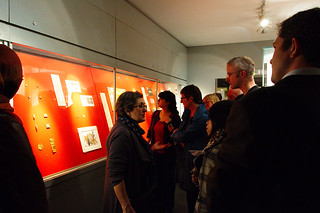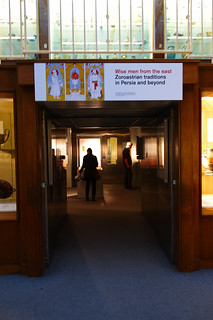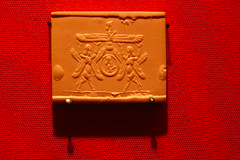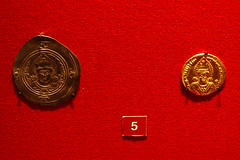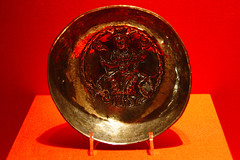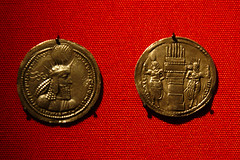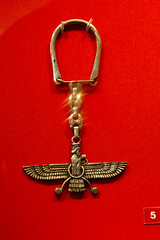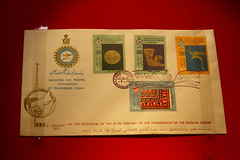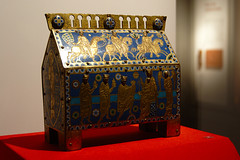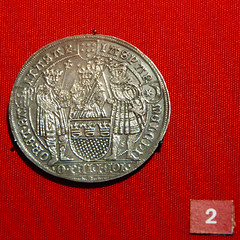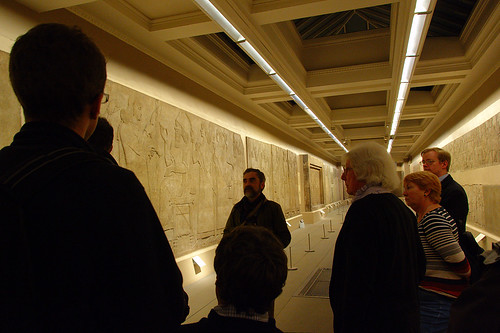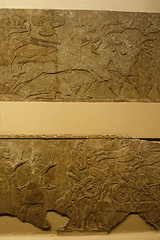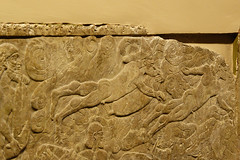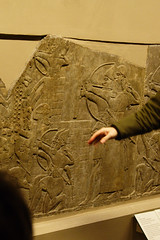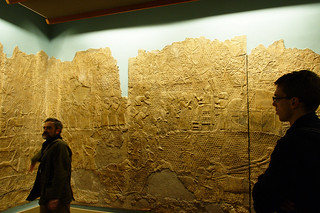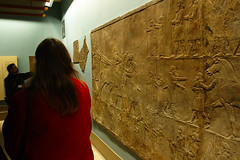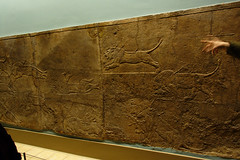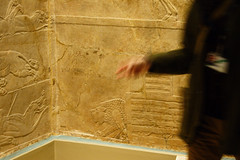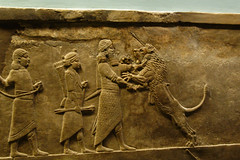In 1815 the British government passed a law fixing the price of grain at a higher than market price. This was the first of the Corn Laws, and it sparked rioting by those most affected – the urban poor. The laws were to last until the late 1840s, when they were finally repealed under pressure from manufacturers concerned about the effect on trade. The three experts who talked about these laws on In Our Time were Lawrence Goldman (Oxford University), Boyd Hilton (University of Cambridge) and Cheryl Schonhardt-Bailey (London School of Economics).
They started the programme by giving us a bit of context. Britain in 1815 was at the start of the process of industrialisation and just coming to the end of the Napoleonic Wars. So there was concern about how the economy was going to adjust to the new demands of peace and industry. There was also concern over political instability in Europe, and worries about the spread of revolution to Britain (it’s not that long after the French Revolution after all). And the industrialisation of Britain was also shifting population and the balance of power more towards the growing manufacturing cities of the north, which was generating pressure for reform of Parliament and extension of the franchise.
So against this backdrop the landowners, who were the major interest represented in the Parliament of the time (both in terms of who has the vote and in terms of how many MPs come from which areas of the country) vote through a law that protects their profits from grain growing. During the war it was harder to import grain, so to feed the country more & more marginal land was forced into cultivation. Now that peace has broken out the landowners are worried that grain imports will force down the price of grain and the profits they make & the rents they can get from their tenant farmers will be reduced. The law was openly protectionist in nature and the landowners who passed it felt it was their due for supporting the country during the war.
Right from the start didn’t go as well as they had hoped. Britain wasn’t actually able to be self-sufficient, but the hope was that for the 4 or 5 years out of 6 when the harvest was good enough then British grain would be enough. And for the other 1 or 2 years in this cycle when the harvest failed then grain could be bought in from the Eastern European farmers and prevent famine. But as one might predict (with the benefits of a cursory, but 21st Century, knowledge of economics) without the market always being there the farmers of East Europe turned to other crops or other ways of making their living, rather than growing surplus corn just in case they could sell it to Britain. So further laws were passed trying to sort this situation out whilst still protecting the interests of the British aristocracy.
Into this situation comes the Great Reform Act of 1832. This extended the franchise to men with less property (one now needed land or a house to the value of £10). And the boroughs were redrawn – the system had been kept the same for about 400 years previously, despite changes in population. Previously there were areas (“rotten boroughs”) where there was little population but they had an MP, and places such as Manchester (a new and growing town in this period) had no representation. This reform changed the balance of power, and the industrialists started to campaign against the Corn Laws. From what the experts on the programme were saying this didn’t have much to do with the plight of those poor who couldn’t afford to buy bread. Instead it was about trading the goods that the manufacturers were making. If Britain wasn’t importing grain then it was hard to get other countries to buy Britain’s exports, which hurt the profits of the industrialists and the country’s economy as a whole. And it was about how if food is expensive, then people buy less clothing or other goods, and again less profit for the boss and less economic activity in general.
The Anti-Corn Law League was formed in 1838, and attracted many supporters. They were working towards a plan for repealing the Corn Laws after the planned 1848 election – involving propagandising to the country in general and the electorate in particular, and getting their sympathisers elected. The Anti-Anti Corn Law League (real name the Central Agricultural Protection Society – CAPS) was formed in 1844 to campaign in support of the Corn Laws. Schonhardt-Bailey gave us some figures to demonstrate something of their reach – the Anti-Corn Laws League started off with about £5,000 worth of subscriptions, and grew by 1845 to ~£250,000 worth of subscriptions. The CAPS had about ~£2,000 worth of subscriptions at that point. The CAPS were handicapped in a couple of ways – firstly their senior figures (like the Duke of Richmond) were the sort of people that fit contemporary stereotypes about useless & wasteful aristocrats, whereas the leaders of the Anti-Corn Law League were charismatic and good persuaders. And the CAPS membership and support base was drawn from people who felt it wasn’t appropriate to take politics “out of doors” – i.e. politics was something that happened primarily in Parliament and between the Members of Parliament. So they had an ideological opposition to drumming up support amongst the electorate & the population at large.
Robert Peel, eventually responsible for repeal, properly enters this clash of ideologies in 1841 when he becomes Prime Minister as the leader of the Conservative Party. The programme digressed a bit to talk about Peel’s background here, as he’s the man responsible in the end for driving through repeal. Peel’s father had been a self-made man, who then became a baronet. Peel himself had been educated at Eton & Oxford, so brought up with the members of the elite, and went into politics. He was ideologically a good fit for the Conservative party of the time, but didn’t feel at ease with them – because he wasn’t part of the old aristocracy he was an outsider in some ways. The Conservative Party was generally in favour of the Corn Laws – they represented the old landed interests. Peel himself voted against repeal several times in the early 1840s, although the experts suggested that he’d always been in favour of repealing them. This probably wasn’t for the same sorts of reasons as the industrialists wanted to repeal them. The suggestion is that Peel saw the Corn Laws as protecting the short term interests of the landed aristocracy at the expense of their long term protection. Effectively he was spooked by the rioting and opposition of the general public to these laws, and believed that as long as these laws existed they kept inflamed the possibility of revolt like in France only half a century earlier. You might have hefty bank balances from your grain profits, but will that help you if the mob burn your house down?
The experts were saying that Peel started by introducing legislation to weaken the effects of the Corn Laws – they believed this was an attempt to avoid looking like he was betraying his party. The plan seemed to be to reduce the laws, and then win the 1848 election on the back of these partial repeals which would then give him the mandate to repeal the Corn Laws fully. But this isn’t how it played out, instead in 1846 Peel brought repeal to the table at Parliament, and managed to persuade sufficient of his party to support him to bring it about. The experts were suggesting perhaps he came to believe his party wouldn’t win the planned 1848 election, so wanted to get this done when the Conservatives would reap the political benefits. Apparently the language used around the issue at the time was fairly religious and overblown (with talk of martyrdom and so on), so perhaps Peel was also swept along by a feeling that it would be the right thing to do to politically die for his faith in repeal.
After the Corn Laws were repealed and a Free Trade approach to the economy was now employed. The experts said that the next couple of decades were very prosperous for Britain – with ample harvests, and plenty of growth in the economy. They also said that this didn’t have much to do with the Corn Laws or Free Trade – it was mostly a result of climatic conditions favourable to agriculture. But because of the presumed cause & effect – repeal of the Corn Laws –> prosperous Britain – this shaped the future of Britain. Free Trade was now seen in many circles as proven to lead to a booming economy.
The programme ended quite abruptly, as Bragg realised they were running out of time – one of the problems with this being a live show I guess. I’m surprised it doesn’t happen more often. I’m not surprised it happened to this one, it was one of those subjects I thought might be a bit dull in advance but turned out to be fascinating once it got going.

